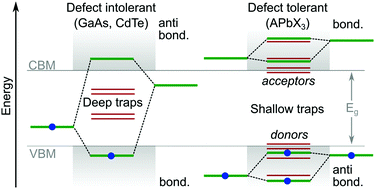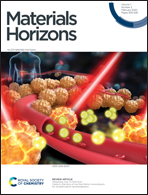It's a trap! On the nature of localised states and charge trapping in lead halide perovskites
Abstract
The recent surge of scientific interest for lead halide perovskite semiconductors and optoelectronic devices has seen a mix of materials science sub-fields converge on the same “magical” crystal structure. However, this has ultimately shaped some ambiguity in the definitions shared between researchers across different research areas. For example, scientists aiming to decipher the nature of localized states within metal halide perovskites sometimes over simplify the problem, using identifers such as “defects” or “states”. Herein, we review the topic of charge carrier trapping within lead halide perovskites, overviewing their causes and influences, as well as specifying their potential resolutions. We assess the popular lead triiodide perovskites for case study and examine the origins of both intrinsic and extrinsic defects leading to charge carrier trapping in performant perovskite-based solar cells, and review the state-of-the-art actions being taken to limit their effects and achieve world-record conversion efficiencies. Finally, we also draw brief comparisons to other emerging lead-free systems and highlight promising optical tools and design principles moving forward.

- This article is part of the themed collections: Materials Horizons 10th anniversary regional spotlight collection: Europe, Horizons Community Board Collection: Solar Energy Conversion, Recent Review Articles and 2020 Materials Horizons most popular articles


 Please wait while we load your content...
Please wait while we load your content...